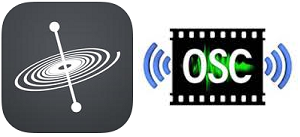| ||||
|
| ||||
|


The OSC-tracker plugin has been around for a while now and may well prove to be the most promising tracker so far. The OpenSoundProtocol is basically an open network protocol and it can be used with UDP, Bluetooth etc. For now, the OSC-tracker uses UDP.
The latest novelty in the headtracking business is called FacePoseApp. It features face-tracking on your smart-phone or iPad and uses OSC to communicate with any OSC-server. FacePoseApp was created by the FaceTrackNoIR Team in corporation with Visage Technologies and was designed to work with the OSC-tracker of FaceTrackNoIR.
To test the OSC tracker combined with your iPhone or iPad you can download FacePoseApp for free. For more information, see the FacePoseApp website. You can also use the free App called LittleOSC
If you have questions regarding the OSC-tracker plugin, please post them here: [discussion:osc]
The current version of the OSC-Tracker can be downloaded here.
FacePoseApp and LittleOSC can be downloaded from the App Store.

Tracker: FaceTrackNoIR supports two trackers to run simultaneously. So you can run two instances of OSC tracker, or use another tracker to supply the axes the OSC tracker does not. With this option you select Primary or Secondary. The settings for Primary and Secondary are stored separately.
Receiving Port-number: this is the number of the UDP-port, to which the external source writes and from which FaceTrackNoIR reads. By default this is port 5550.
Enable and Configure Axis
The OSC Tracker currently reads up to 6 values from the remote OSC device and shows their (raw) values. FYI: GyrOSC and most other gyro-based trackers only supply 3 values!)
For each of these values, the following settings can be configured:
Communication
The OSC Tracker reads OSC messages and only gets 3 parameters when the address pattern is "gyrosc/gyro" or "gyrosc/xyz".
When no messages or "wrong" messages arrive, the respective counter will increase. The counter is reset, when a good message arrives. When either counter exceeds 100, "Tracking" will be reset to "False".
The UDP protocol is a networking protocol, so the known issues apply to this. The software using networking resources must be allowed to do so by Windows. Usually Windows asks the user for permission to do so, the first time FaceTrackNoIR starts.
The port(s) used for UDP communication must be "open". So make sure no FireWall or other software is blocking the required port(s). Also routers are often configured to block UDP, so you may have to check your router's settings to allow UDP communication.
When a process using an UDP-port terminates unexpectedly, the port may stay occupied. ATM this can only be remedied by rebooting the PC.
The default address-pattern of the OSC-messages used for Pitch, Yaw and Roll and X, Y and Zis:
/gyrosc/gyro {pitch, roll, yaw}
/gyrosc/xyz {x, y, z}
The 3 angles are in radials and the translations in cm
Please drop me an e-mail, if you want to interface with FaceTrackNoIR and need some help... I would also be interested in any projects using FaceTrackNoIR. Quite a number of "serious" applications can be enhanced with face-tracking!